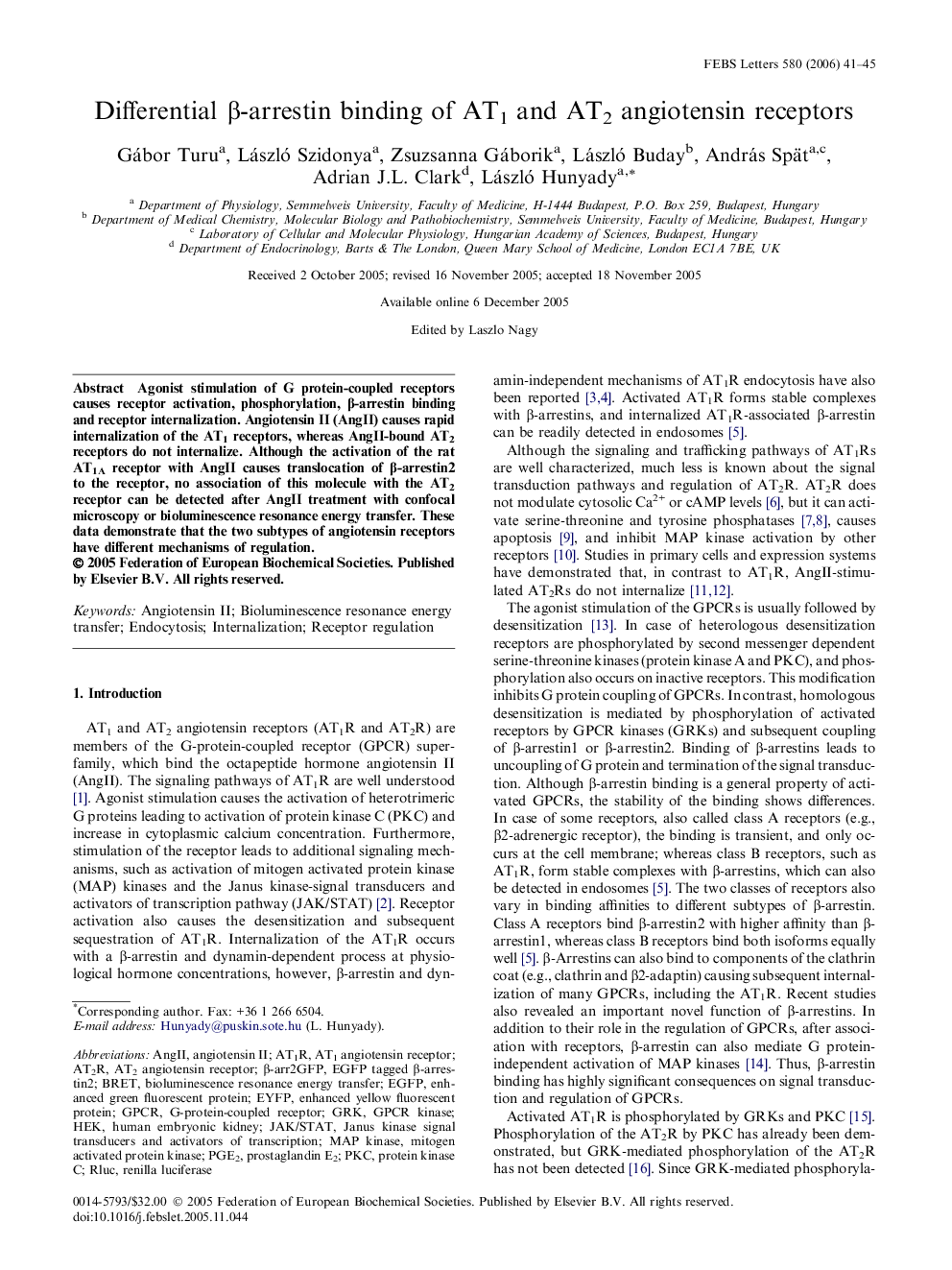| Article ID | Journal | Published Year | Pages | File Type |
|---|---|---|---|---|
| 2052203 | FEBS Letters | 2006 | 5 Pages |
Abstract
Agonist stimulation of G protein-coupled receptors causes receptor activation, phosphorylation, β-arrestin binding and receptor internalization. Angiotensin II (AngII) causes rapid internalization of the AT1 receptors, whereas AngII-bound AT2 receptors do not internalize. Although the activation of the rat AT1A receptor with AngII causes translocation of β-arrestin2 to the receptor, no association of this molecule with the AT2 receptor can be detected after AngII treatment with confocal microscopy or bioluminescence resonance energy transfer. These data demonstrate that the two subtypes of angiotensin receptors have different mechanisms of regulation.
Keywords
Related Topics
Life Sciences
Agricultural and Biological Sciences
Plant Science
Authors
Gábor Turu, László Szidonya, Zsuzsanna Gáborik, László Buday, András Spät, Adrian J.L. Clark, László Hunyady,
